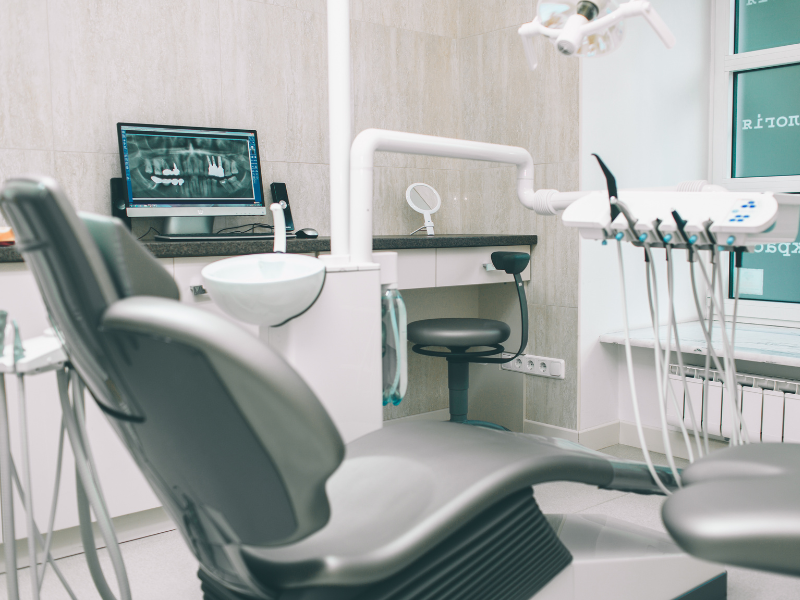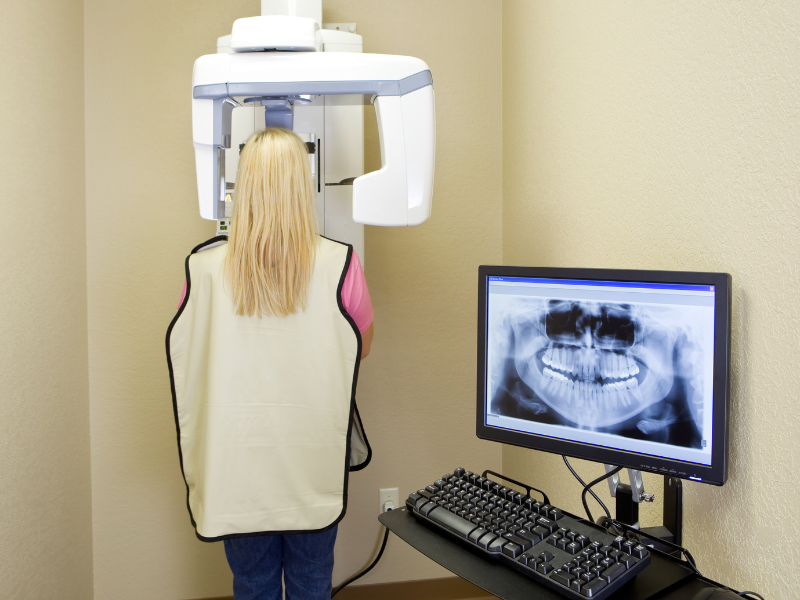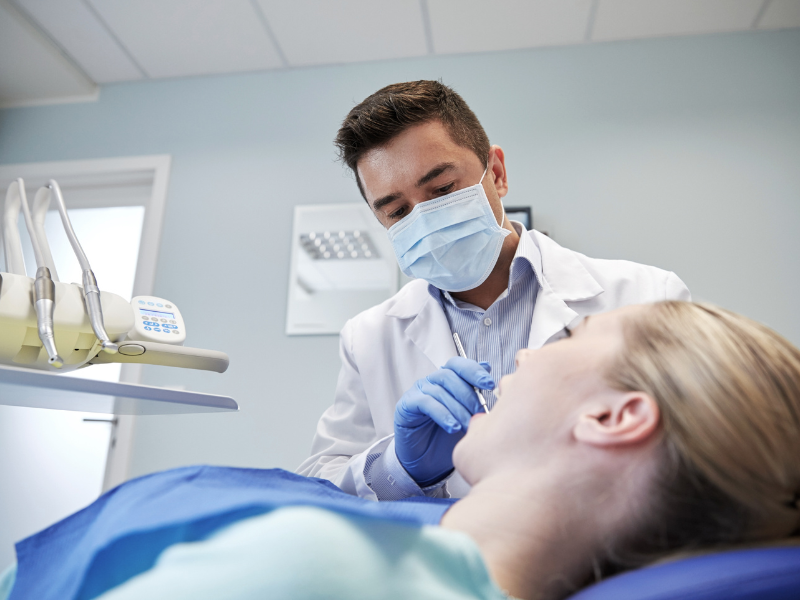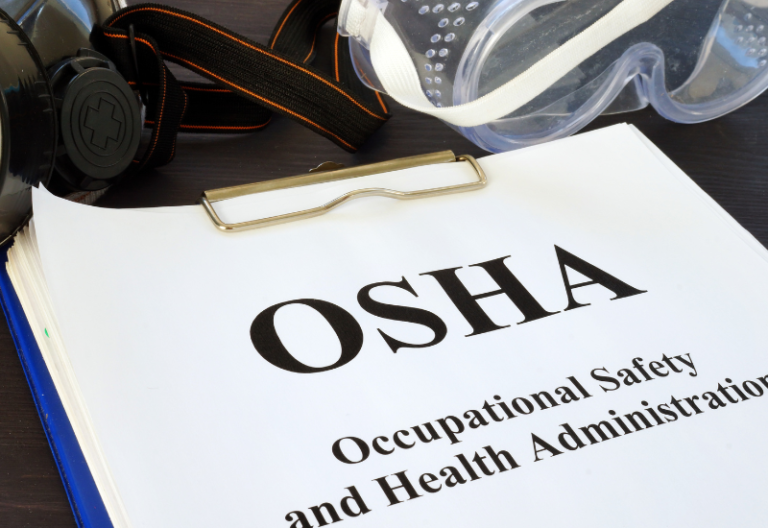Like other medical facilities, dental offices must follow the compliance guidelines set by OSHA for workplace health and safety. In this regard, having a checklist can help dental clinics navigate through the various OSHA requirements.
If you are looking for one, the OSHA dental office checklist below should serve as a helpful resource for you to evaluate your current workplace safety and health practices.
Table of Contents

Is There an Official Dental Office Compliance Checklist?
Presently, OSHA doesn’t provide an official compliance checklist. In an OSHA memorandum on the American Dental Association Checklist, OSHA has stated, “. . .OSHA cannot endorse any document or make any statement that in any way presumes that a checklist would result in ‘substantial compliance with OSHA regulations'”.
The memorandum goes on to say that compliance with OSHA regulations isn’t based on a checklist but on the area director’s final determination after the compliance officer’s evaluation. A checklist may oversimplify and reduce OSHA standards and should not substitute for any OSHA provision or standard.
That said, checklists can still be valuable tools for dental offices. They can guide your practice on important safety and health practices. They remind you of critical tasks and procedures that must be followed. They can also be used as training aids for new employees or as refresher materials for existing staff.
While OSHA doesn’t endorse specific checklists, checklists still allow offices to identify areas of improvement and take corrective actions. Use the checklist below as a starting guide, but remember to review, double-check, and counter-check the original OSHA standards so you don’t miss out on important legal requirements.
OSHA Checklist for Dental Offices
The OSHA dentistry webpage says that, presently, there are no specific OSHA requirements for dental offices. However, the fact remains that numerous workplace hazards exist in dental offices, potentially risking a worker’s health and safety.
This OSHA for dental offices checklist is based on the Frequently Cited OSHA Standards Results for Offices of Dentists. These standards were among those most frequently violated by dental offices from October 2022 through September 2023. Note that OSHA standards are very detailed, and this checklist contains general guidelines for frequently violated standards.
Bloodborne Pathogens Standard
- Establish a written and updated Exposure Control Plan and make it accessible to employees
- Prepare an exposure determination listing job classifications and tasks with occupational exposure.
- Follow Universal Precautions to prevent contact with blood or other potentially infectious materials.
- Use engineering and work practice controls to eliminate or minimize exposure.
- Provide accessible handwashing and eye wash facilities.
- Ensure proper handling and disposal of contaminated sharps.
- Prohibit eating, drinking, smoking, or applying cosmetics in work areas with potential exposure.
- Minimize procedures involving blood or other potentially infectious materials.
- Provide appropriate, clean, well-maintained, and accessible PPE at no cost to employees.
- Maintain a clean and sanitary work environment.
- Clean and decontaminate equipment and surfaces after contact with potentially infectious materials.
- Properly dispose of regulated waste and handle contaminated laundry with care.
- Implement standard microbiological practices.
- Enforce special practices for handling HIV and HBV materials.
- Ensure containment equipment and facilities meet specific criteria.
- Provide autoclaves for decontamination.
- Follow OSHA guidelines on Hepatitis B Vaccination and Post-Exposure Evaluation
- Affix warning labels to containers of regulated waste, refrigerators, freezers, and other containers storing blood or potentially infectious materials.
- Properly label biohazard materials according to OSHA standards.
- Provide a free training employee program on occupational exposure during working hours.
- Keep and maintain an accurate record of each employee with occupational exposure. These records should be kept confidential and should not be disclosed without the employee’s written consent.
- Keep detailed training records for at least the duration of the employment plus 30 years.
Hazard Communication Standard
- Provide labels and safety data sheets of hazardous chemicals for exposed workers.
- Train employees to handle chemicals properly.
- Train employees on new label elements and safety data sheets.

Ionizing Radiation Standard
- No individual in a restricted area should receive ionizing radiation doses exceeding OSHA standard limits.
- Obtain authorization to permit individuals to receive doses over the specified limits under certain conditions.
- Maintain adequate exposure records to ensure compliance with authorized dose limits.
- Prohibit individuals under 18 years from receiving doses exceeding 10 percent of the limits specified in OSHA standards.
- Determine calendar quarters to track radiation exposure over three-month periods.
- Ensure that employees are not exposed to airborne radioactive material concentrations exceeding the limits specified in OSHA standards.
- Provide appropriate personnel monitoring equipment (e.g., film badges, pocket chambers, dosimeters) for employees entering restricted and high radiation areas.
- Monitoring equipment is required for employees likely to receive doses exceeding specified limits.
- Conduct surveys to evaluate radiation hazards in the workplace.
- Use appropriate equipment and measurements to assess radiation levels and concentrations of radioactive materials.
- Provide comprehensive training to employees regarding radiation hazards, exposure limits, monitoring equipment usage, and precautionary procedures.
- Maintain accurate, accessible, and up-to-date records of surveys, exposure assessments, monitoring results, and employee training.
- Follow OSHA standards for caution signs, labels, and signals in high-radiation areas and radioactive materials packaged for shipment.
- Employers regulated by the Nuclear Regulatory Commission must adhere to 10 CFR part 20 standards, while those in specific states follow state laws and regulations.
- Ensure that individuals working in or frequenting radiation areas receive proper instruction on safety precautions and radiation exposure risks.
- Secure radioactive materials stored in non-radiation areas and guard them against unauthorized removal.
- Dispose of radioactive materials only through authorized recipients or approved methods by the Nuclear Regulatory Commission or relevant state regulations.
- Immediately notify the Assistant Secretary of Labor or their representative of any radiation incidents meeting specified exposure thresholds.
- Provide notification within 24 hours of incidents involving lower exposure thresholds.
- Submit written reports to the Assistant Secretary of Labor detailing any exposures exceeding established limits within 30 days.
- Provide affected individuals with written notices of the nature and extent of their exposure.
- Maintain records of radiation exposure for all monitored employees and inform them of their individual exposure levels annually.
- Provide former employees with their radiation exposure reports upon request, covering each calendar quarter or requested period.

Respiratory Protection
- Create and update a written plan with site-specific rules. The plan should cover respirator selection, medical checks, fit testing, emergency steps, upkeep, air quality, and staff training.
- Provide respirators when needed for safety.
- Ensure employees follow voluntary use rules.
- Appoint a qualified administrator to run and assess the respiratory protection program.
- Offer respirators, training, and health checks for free.
- Provide suitable respirators based on workplace risks and user needs. Follow OSHA standards in choosing respirators for Immediately Dangerous to Life or health (IDLH) atmospheres, gas and vapor protection, particulate protection, and the like.
- Use only NIOSH-certified respirators as instructed.
- Employers must provide a medical evaluation and if necessary, follow-up evaluations by a licensed healthcare professional (PLHCP) before fit testing or respirator use.
- Conduct evaluations confidentially and only during work hours.
- Employees are allowed to discuss medical exam results with the PLHCP.
- Ensure proper facepiece seal protection, including user seal checks.
- Maintain respiratory effectiveness throughout the work shift.
- Respirators must be cleaned, disinfected, and stored according to specified intervals and conditions.
- Inspections should be conducted before each use and periodically for emergency use respirators.
- Repairs must be performed by trained individuals using approved parts and methods.
- Compressors must prevent contamination and maintain suitable air quality.
- Filters, cartridges, and canisters must be labeled and color-coded with NIOSH approval.
- Employees must be trained on respirator necessity, limitations, usage, maintenance, and more.
- Training should be understandable and provided before respirator use.
- Staff retraining is required annually and under certain circumstances.
- Retain records of medical evaluation and fit testing.







